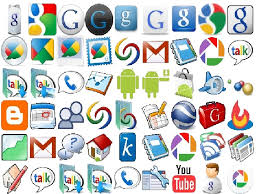Redfin: Baby boomer homeownerse could prolong the shortage of homes for sale.
2024 What's Next Longevity Venture Summit (online)
2024 Longevity Venture Summit (DC)
 A long time ago (7 years this month) in a tech world far, far away, a report sponsored by then-AARP executive Jody Holtzman predicted that technology change would deliver a new user experience. The concept was referred to as "Technology Design for All" -- defined as 'User experiences that appeal to all age groups, persisting across versions and devices.' According to the report Connected Living for Social Aging, which was published 7 years ago this month, the future was predicted. It is worth a look back -- note that it did happen just as described. Consider smart speakers (the Echo was launched in 2014), IoT boxes, phones, tablets, PCs, Macs and all cloud-based software. These work without the need to download and upgrade on Patch Tuesday, though privacy improvements are the next big technology hurdle. From the report, with the chart giving an italicized nod to tech of 2018:
A long time ago (7 years this month) in a tech world far, far away, a report sponsored by then-AARP executive Jody Holtzman predicted that technology change would deliver a new user experience. The concept was referred to as "Technology Design for All" -- defined as 'User experiences that appeal to all age groups, persisting across versions and devices.' According to the report Connected Living for Social Aging, which was published 7 years ago this month, the future was predicted. It is worth a look back -- note that it did happen just as described. Consider smart speakers (the Echo was launched in 2014), IoT boxes, phones, tablets, PCs, Macs and all cloud-based software. These work without the need to download and upgrade on Patch Tuesday, though privacy improvements are the next big technology hurdle. From the report, with the chart giving an italicized nod to tech of 2018:
'Within the context of communication and engagement technologies, attributes are beginning to emerge and will become pervasive in devices and software within the next five years, contributing to realization of design-for-all technology. They include:
Attributes Design for All Examples
User Interfaces | Adaptive: selected feature subsets, Customizable user experience (volume, size, font, brightness, audible) | Televisions (LG, Sony, Panasonic) 2010 and beyond (and all tablets, touchscreens, phones and even kiosks today) |
Interaction modes | Multi-modal : Voice, touch, gesture, speech-to-text, text-to-speech | Motorola Droid2 Global (and all smartphones and tablets today) |
Software | Cloud-based: functionality separated from interface, centralized privacy management | Netflix, Amazon, Salesforce.com (and all cloud-based software today) |